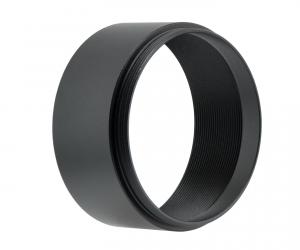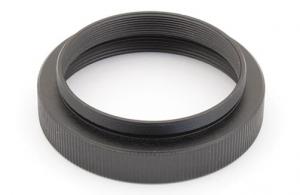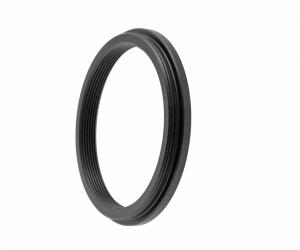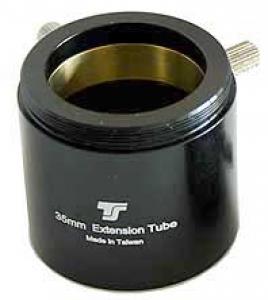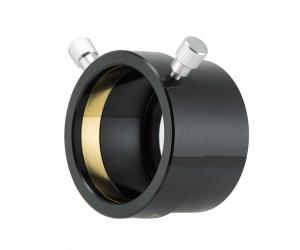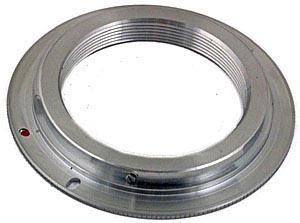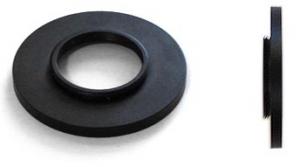- Telescopes
- Overview:
Telescopes - Achromatic Refractor
- Apochromatic Refractor
- Overview:
Apochromatic Refractor - ED Refractor - less color aberration than an achromatic
- SD APO - color free 2-element APO objective
- EDT APO - 3 element ED objective
- High End APO with 3-element APO objective - no color aberation
- Flatfield APO with flat field for Astrophotography
- All Apos and EDs from all manufacturers - large overview
- TS APO and ED from Japan with high quality optics
- Overview:
- Newtonian Telescopes
- Dobsonian Telescopes
- RC Ritchey Chretien Telescopes
- Casssegrain Telescopes
- Reflektor Telescopce with Lens Correcture
- Maksutov Cassegrain Telescopes
- GoTo Telescopes
- Solar Telescopes H-Alpha
- Overview:
- Mounts Tripods Rings Rails Power Supply ...
- Overview:
Mounts Tripods Rings Rails Power Supply ... - Mounts Equatorial with GoTo
- Mounts Equatorial without GoTo
- Mounts Azimutal with GoTo
- Mounts Azimutal without GoTo
- Mounts GoTo - Harmonic Drive
- Travel mounts for astro imaging
- Tripods Piers Polar Wedges
- Mount Control & Electronics
- Dovetail Clamps, Plates and Mount Adapters
- Tube Rings
- Power Supply
- Counterweights Balance Weights
- Mount Accessories - Other
- Overview:
- Telescope Accessories
- Overview:
Telescope Accessories - Eyepieces
- Barlows & Reducer Lenses
- Diagonal Mirrors and Prisms
- Binocular Viewers
- Finder Scopes
- Telescope Collimation and Test
- Cleaning Tools
- Transport and Storage
- Dust protection for Telescopes & Accessories
- Stray Light Protection
- Dewcaps and Heater
- Focusers, Adapters, Motorfocus
- Telescope DIY & Improvement
- Other telescope accessories
- Replacement Parts
- Overview:
- Filters
- Overview:
Filters - Color Filters and Color Filtersets
- Nebular Filters for Visual Observing
- Neutral-Density and Polfilter
- Photo Narrowband Nebular Filters
- Photo Broadband Filters
- Photo Planetary Filters
- Photo R-G-B and IR Cut Filters
- Photo - Filtersets
- Photometric Filters
- Clip Filter for DSLR Cameras
- Filter Wheels and Filterslider
- Solar Filters for white light
- Solarfilter for H-Alpha and Calcium
- Overview:
- Adaptors
- Overview:
Adaptors - Adapter 1,25" and 24,5mm
- Adapter 2"
- Adapter T2 - M42x0.75
- Adapter M48x0,75
- Adapter M54
- Adapter SC
- Adapter M63
- Adapter M68
- Adapter to other Threads
- Adapter Extensions
- Adapter camera bayonet
- Adapter Objective Filterthread
- Adapter Quick Changing , Rotation
- Adapter Eyepiece Projection
- Adapters Tilting
- Overview:
- Astrophotography and Photography
- Overview:
Astrophotography and Photography - Cooled Cameras
- Cameras without Cooling
- Deep-Sky Cameras uncooled
- Set-Offers Camera, Filter, Wheels
- Acessories for Cameras
- Travel mounts for astro imaging
- Imaging Correctors for Telescopes
- Autoguiding Cameras & Sets
- Everything for Guiding
- Focusing aids - Bahtinov mascs
- Flat Field foils and boxes
- Lenses for Cameras
- Piggyback Camera Holder
- Camera Bags, Photocases & more
- Digital Camera and Smartphone Adapter
- Other photo accessories
- Overview:
- Binoculars, Spotting Scopes, Microscopes, Range Finders
- Overview:
Binoculars, Spotting Scopes, Microscopes, Range Finders - Roof Prism Binoculars
- Binoculars with Porro prisms
- Binoculars from 100mm Aperture
- Binoculars with 1,25 inch eyepieces
- TSMX APO Binoculars
- Binoculars for Astronomy
- Binoculars Hiking Bird watching
- Monoculars - Opera Binoculars
- Accessories for Binoculars
- Spotting Scopes
- Range Finders
- Microscopy
- Bags for Phototripods & Binoculars
- Overview:
- Phototripods and Binomounts
- Books, Software
- Overview:
Books, Software - Books for Astronomy Beginners
- Star Charts and Planispheres
- Books about our Solar System
- Observing Tips for Amateurs
- Popular Astronomy Literature
- Teaching material
- Astrophotography books
- Telescopes, Observatories, Construction
- Calendars Yearbooks
- Software, Star Charts
- Books for Microscopers
- Books Nature and Animals
- Nature Photography TimeLapse
- Overview:
- Night Vision, Magnifiers, Weather, Domes & more
- Beginner Astronomy and Gift Ideas
- Second Hand & Special Offers
- New products
Manufacturer: -TS Zubehör
Product number: TSFLIP
EUR119.90new
EUR 119,90RRP EUR 169,00you save 29.1% (EUR 49,10)
incl. 19 % VAT (DE)
The VAT indicated refers to that applicable in Germany. After logging in, the VAT amount is adjusted to the applicable VAT of the stored delivery country. Therefore, the final price may vary accordingly.
excl. 6.95 € shipping costs (DE)
more details to the shipping costs ...Please log in to calculate shipping costs to your country.
rating: 5.0 of 5TS-Optics 2" Flip Mirror System & Off Axis Guider - short design1
- Details..
- Technical data..
- In the box..
- Reviews..
- Manufacturer infos..
- Safety informations..
TS-Optics 2" Flip Mirror System & Off Axis Guider - short design
Teleskop-Service has broken new ground and developed a completely new alternative to classical flip-mirror systems. Not only the short design but also the versatile use convinces.Fields of use:
The TSFLIP is suitable for the following telescopes:
As it only needs 35.5 mm back focus, its compatibility is by far higher than conventional flip mirror systems.Refractor telescopes, Schmidt Cassegrains, RC and Mak telescopes can be used with the TSFlip without problems. With Newtonians, the back focus must be long enough.
How to measure the back focus of my telescope:
Back focus means the "spare travel" of your focuser. Just place a standard eyepiece (without diagonal etc.) in your focuser and focus a celestial object (or one that´s at least 1 km away). Then, measure the way the focuser could travel inside and add the space of the 2"/1.25" adapter if you have used one. That´s your back focus.
Necessary back focus for visual observation or photography with CCD cams / web cams: 75 mm
The necessary back focus is calculated by the back focus of the TSFlip itself and the length of the sideward viewing terminal. This is true for both modi (Flip Mirror or Off Axis Guider).
Necessary back focus for photography with (D)SLR cameras: min. 82 mm
The necessary back focus is calculated by the optical length of the TSFlip and the back focus of the SLR camera (35.5 mm + min. 46 mm for the SLR camera). With a classical T2 adapter, 10mm have to be added. Please have a look at our extra thin adapters shown in the accessories section.
Using the TSFLIP:
That´s how the TSFlip works:A multi-coated prism guide the light by 90° out of the system.
Focusing the sideward terminal:
First, focus the camera or eyepiece that sits in the straight-through position. Then (without touching the telescope´s focuser) focus the 90° eyepiece or camera by loosening the top screw beneath the T2 thread and slide the adapter up or down. Then, tighten the screw again. Now both eyepieces / cameras are in focus.
TSFlip connection threads:
Thanks to the popular standard threads, the TSFlip can be connected to nearly all telescopes.
Adapter recommendations for telescope connection:
TSVF230 - for standard 2" focusers
TSSC-M48 - for SC back ends
TST2-M48L - for T2 back ends
Adapter recommendations for the T2 terminals:
TST2-1-T2L - for 1.25" accessories
TST2-2 - for accessories with 2" nosepiecese
T2-CS - for cameras with C mount thread
T2-EOSs - short adaptation for Canon EOS cameras
| Telescope side connection: | M48x0.75 (2" filter thread) |
| Straight-through and 90° terminal: | M42x0.75 (T2 thread) |
| Rotation telescope side and camera side connection: | 360° possible |
| Diameter base body without prism attachment: | 76 mm |
| Height with prism in beam path: | 96 mm |
| Height with prism out of the beam path: | 122 mm |
| Optical path length of the main body: | 35.5 mm (the T2 thread is not included) |
| Distance from M48 thread connection to prism center: | 17.8 mm |
| Distance from prism center to the T2 thread of the 90° port: | 46 mm to 55 mm adjustable |
| Clear aperture of the main body: | 38 mm |
| Clear aperture of the 90° terminal: | 16 mm |
| Weight: | 370 g |
The experiences of our customer Stephen Brown:
"I received my TS Flip OAG this morning. I did not expect such speedy service, my first impressions are it look great, a well made piece of equipment. I have tried it on my Skywatcher Refractor and my Celestron C8 SCT in daylight and looks like this will be a very useful tool for targeting as a flip mirror and then as tracking device in OAG mode. It has a nice large aperture on the 90 degree guiding port. I have been looking for a Off Axis Guider for a while they all have good points and bad points, the TS Flip OAG does not appear to have any bad points, I am very happy."
| Manufacturer / Importeur: | Teleskop-Service Ransburg GmbH |
| Street: | Von-Myra-Str. 8 |
| ZIP / City: | 85599 Parsdorf |
| Country: | Germany |
| Telefon number: | +49 89 99228750 |
| Email: | info@teleskop-service.de |
| Website: | www.teleskop-express.de |
Safety informations: PDF Download
Recommended accessories
Adaptors
Eyepiece-side accessories like Filters
TS-Optics adapter reduction from T2 to 1.25" - additional T2 thread - short
EUR 29,90RRP EUR 34,00you save 12.1% (EUR 4,10)
Visual Back T2 to 1.25" - with additional T2 male thread - long
EUR 29,90RRP EUR 34,00you save 12.1% (EUR 4,10)
Reviews
Written by David King
on 2021-10-01
"gut "
Written by Gabriel Curio
on 2020-05-26
"Sauber verarbeitet."
Written by Silvano Chialina
on 2018-01-12
"As expected"






















